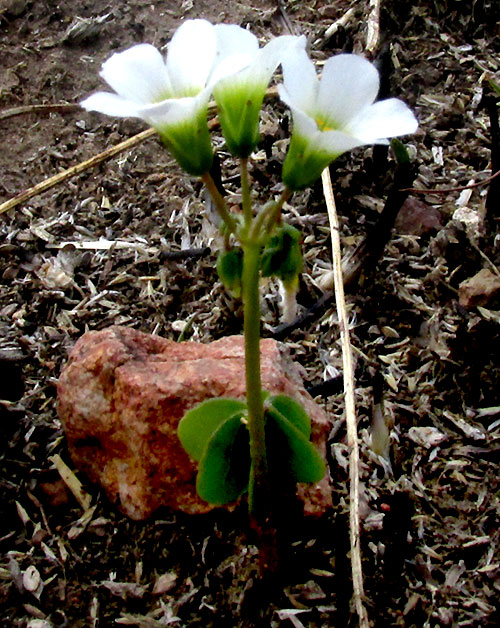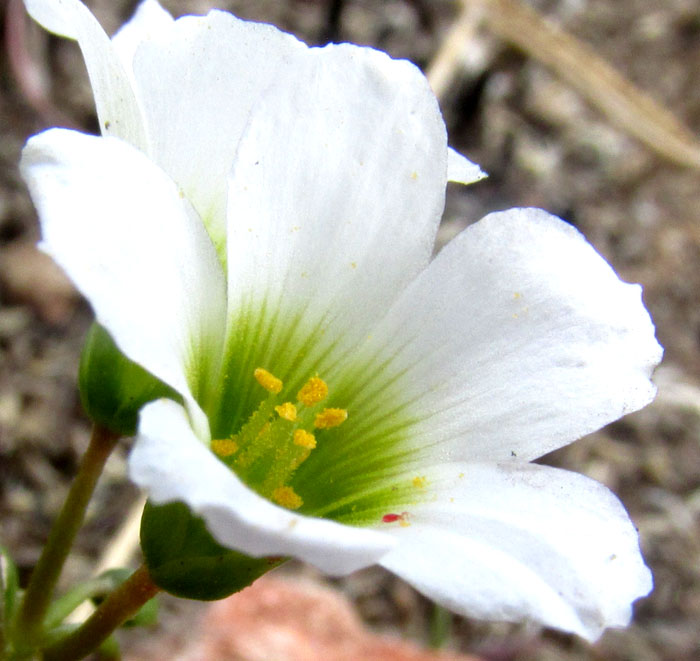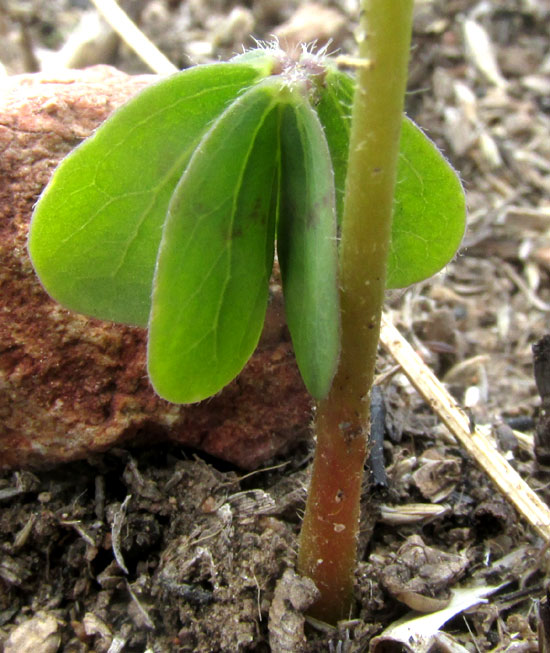Excerpts from Jim Conrad's
Naturalist Newsletter
entry dated June 26, 2022, issued from near Tequisquiapan, elevation about 1,900m (6200 ft), N20.565°, W99.890°, Querétaro state, MÉXICO
BROAD-LEAF WOOD-SORREL

About a week after the first soaking rain since last December, in a large, very overgrazed, recently burnt and eroded field, the above suddenly appeared. A few other individuals also were scattered here and there across the field. It was a cloudy, windy day and the field still was black from the burning, so these wind-shaken white blossoms from a little distance seemed like globes of glowing light flickering just above a vast plain of desolation. Here's a peep into a flower:

In this species, leaves and flowers arise from an underground bulb, so what looks like a stem bearing flowers at its tip is actually an inflorescence's peduncle. The compound leaf arises from the bulb, too, and the one shown below hasn't yet opened into its clover-leaf shape:

With its compound, clover-like leaf and simple, classically 5-petaled corolla, anyone familiar with the Temperate Zone's wildflowers will recognize this as a wood-sorrel, also called oxalis, genus Oxalis. In most places up north several Oxalis species contribute to wildflower and weed populations, for Oxalis is a big genus. About 700 species are recognized across the world, with some 36 in North America. However, down here they're even more conspicuous, for mostly the genus is tropical and subtropical American. Just in our dry, upland, central Mexico region known as the Bajío, about 14 species have been documented.
This is OXALIS LATIFOLIA, in the US known as the Broad-leaf Wood-sorrel. It inhabits many environments from Rocky slopes, ledges and crevices to sandy washes and flood plains, mesquite scrub, oak-juniper-pinyon-pine forests, to fallow fields and overgrazed ranges. It's distributed from the arid lands of southern California to Texas, south to Argentina, and it's invasive in much of the rest of the drier parts of the world. As you might guess with such an adaptable species, there's much taxonomic indecision about how to deal with its many local variations.
Of course the thing about Oxalis species is that they taste acidy because of their high content of oxalic acid. Not only does that make them useful for spicing up salads, but also they've claimed their place in traditional medicine.
The online Atlas de las Plantas de la Medicina Tradicional Mexicana reports that in Puebla, to get rid of hiccups or cure a "hot stomach," you should eat the leaves, but without sugar, since that diminishes the effect. In Sonora they use it for inflammation of the mouth.